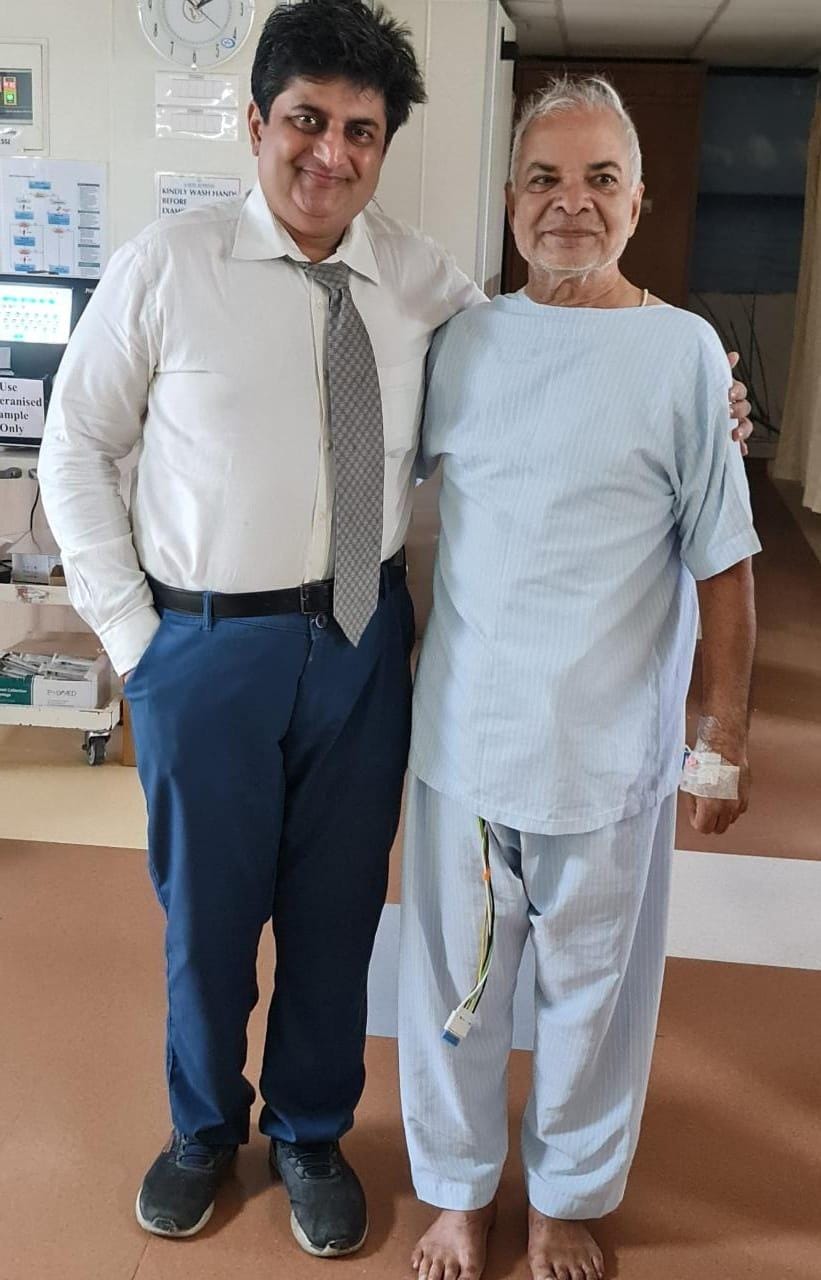by Suman Gupta
Mumbai: A human act by a neighbor(an ex-nurse), saves the life of a 74-year-old Chirabazar resident Shashikant Dave, who collapsed near his home. His neighbor performed an emergency 40 minutes Cardiopulmonary Resuscitation (CPR) procedure to revive the patient before the help arrived. Later, the patient received timely treatment and got a new life.
The patient Mr Dave experienced severe chest pain, and drenching sweats, and fell on the ground after having his morning tea on April, 14. He was unconscious and unresponsive. Luckily for him, his next-door neighbor, a 62-year-old Harsha Bhagat was around. Not only that, she is a former nurse who was aware of the CPR procedure for over 3 decades. This method is life-saving. In front of a shell-shocked family, she pumped blood into the limp body by compressing the front of the bone above the heart with her bare hands. Meanwhile, they transported the patient to Saifee Hospital.
Dr Kaushal Chhatrapati, TYR Interventional Cardiologist in charge of this patient explained, “During a severe heart attack, the heart often stops. The countdown starts from that second onwards. To keep the brain alive, we need to restart the heart by shocking, pending that give effective CPR. “The technique of CPR is paramount. The patient is to be laid on a flat surface, his mouth turned to one side, making sure the tongue doesn’t fall back. The person performing the CPR kneels down beside him and interlocks the finger of both of his/her hands. The bone over the heart: sternum, is pressed down 100-120 times a minute. Although blowing air into the mouth was done initially, today that step is optional. As cultural, hygienic, and social taboos interfere with mouth-to-mouth Resuscitation, that step negatively influences the decision to give CPR at all. Today, most organizations recommend “Hands-only CPR”, with no need to give mouth-to-mouth respiration. This has almost the same survival, and is far more easily accepted socially.”
Dr Chhatrapati added, “Bystander CPR, or CPR performed by a nonmedical person outside the Hospital set up is the key to increased heart attack survival. Learning the technique is paramount. I would urge each and every person reading this article to learn the technique, say by seeing a few YouTube videos on the topic.”

When they brought the patient to Saifee Hospital ER, he was alive, thanks to the CPR he received at home from a brilliant neighbor. “Of course, as soon as he was wheeled in the casualty, we took over. The ECG showed a very fast heart rate. We had to shock the heart twice before we could restore the normal heart rhythm. Finally, the patient came around. Within minutes of his revival, he was wheeled into Cardiac Catheterization Lab, and I opened the completely occluded artery in his heart, clogged with clots and Cholesterol, followed by stenting. Another artery, which was 85-90% occluded was dealt with separately after days. Four days after the heart attack, the patient is home on 18th April, and completely asymptomatic,” said Dr Chhatrapati.
“Out of Hospital Cardiac Arrest is when the heart has stopped outside the Hospital, it is associated with a very high mortality rate of around 90% plus. The few who survive have neurological damage. This is because the brain cells die within 3 minutes of the heart-stopping. If the patient is alive and well today, it is only because of the astute neighbor trained in CPR. I merely performed my duty as an Interventional Cardiologist and opened the artery. It was undoubtedly the neighbor who far exceeded the expectations of a lay bystander,” underscored Chhatrapati.
“I saw Mr dave who collapsed so I quickly rushed to him. He was gasping and his pulse disappeared. I learned CPR training years ago and it was the right time to put it to use. I am glad that his life could be saved by this timely procedure,” said Harsha Bhagat.
“I thank her for saving my life. I admire her courage to act quickly with the presence of mind and perform the procedure without any delay. I am feeling better now,” concluded the patient Mr Shashikant Dave.
